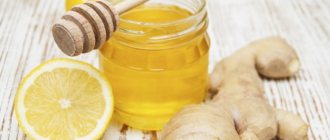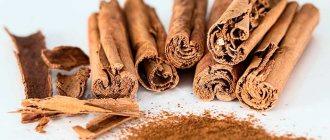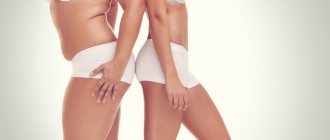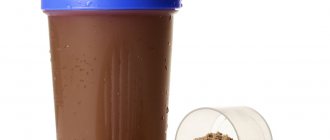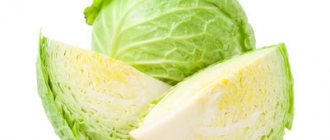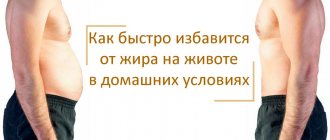Greetings, friends! Until recently, eating less fatty foods seemed quite logical. However, now the fat diet for weight loss is gaining momentum.
Imagine, it turns out that you can lose weight with such a nutrition system! Her fans say that it is completely safe, and most importantly, effective. This is such a paradox (at first glance).
I decided to thoroughly understand this technique. Is it true that fat burns fat? I invite you to join the investigation!
The essence of the diet
A fatty diet is a nutritional system consisting of animal fats and proteins. At the same time, the amount of carbohydrates is strictly limited. The diet is good because it perfectly suppresses hunger and reduces appetite. A person follows it with ease.
With this diet, fruits and vegetables are strictly prohibited, but meat and lard are allowed. Such nutrition is very effective in the fight against extra pounds, as the fat layer is quickly broken down. The body simply does not need to “stock up” on fats, because it will receive them every day.
Thanks to this, effective weight loss occurs; fats are simply broken down and removed from the body without remaining in it. At the same time, the person feels great: the substances supplied with food lift the mood and charge with energy.
Disadvantages and contraindications
Potential Adverse Reactions
on a diet rich in fat:
- Increased hair loss.
- Deficiency of calories, protein, vitamins, stress.
- Keto flu (requires more fluid, salt, less often other electrolytes).
- Increased heart rate (may be due to increased cortisol).
- Increased cholesterol (it is necessary to evaluate an extended lipid profile; it may be temporary, associated with cholestasis, or genetic characteristics).
- Keto rash (may be a manifestation of an egg allergy or pantothenic acid deficiency).
- Menstrual irregularities (associated with a decrease in calories, protein, overtraining).
- Decreased tolerance to alcohol (intoxication occurs faster, hangover is more severe).
Absolute contraindications:
- Birth defects of certain enzymes:
- Carnitine palmitoyltransferase (CPT) deficiency types 1 and 2.
- Carnitine translocase deficiency.
- Impaired beta-oxidation of fatty acids.
- Mitochondrial 3-hydroxy-3methylglutaryl-coenzyme A synthetase (mHMGS) deficiency.
- Short-chain acyl dihydrogenase deficiency (SCAD).
- Medium chain acyl dihydrogenase (MCAD) deficiency.
- Long-chain acyl dehydrogenase deficiency (LCAD).
- Medium chain 3-hydroxyacyl coenzyme A deficiency.
- Deficiency of long-chain 3-hydroxyacyl-coenzyme A.
- Porphyria.
- Alison's disease
- Any acute conditions
- End stages of renal and liver failure.
Conditions in which ketosis is permitted, but requires correction
menu or special additives:
- Hereditary familial hypercholesterolemia.
- ApoE genotype.
- Gilbert's syndrome.
- Hypothyroidism
- Low cortisol.
- Housing and communal services History of cholecystectomy.
- Inappropriate genes.
- True, familial gout.
- Oxalate stones in the kidney.
- Erased forms of congenital defects of enzymes of beta oxidation of fatty acids, carnitine metabolism.
- Constant breakdowns and something close to it - “they didn’t remove sugar, but added fat.”
- Type 1 diabetes or insulin-dependent type 2 diabetes, if you are not ready to delve into it and are confused about how to adjust insulin doses.
- Pregnancy and period of unsteady lactation.
Varieties
Diet of Jan Kwasniewski
Nutritionist from Poland Jan Kwasniewski has been studying healthy eating and the principles of losing weight for more than thirty years.
He developed a revolutionary method for getting rid of extra pounds.
In his opinion, there is no need to give up fats during a diet; you should create a diet based on them.
When there is a lack of fat, the body begins to store it, which leads to weight gain. If fats enter the body regularly, the body does not experience a deficiency in them and the process of deposition does not occur. They are simply eliminated from the body. At the same time, metabolism accelerates.
Basic principles
- It is necessary to exclude bread, cereals, vegetables and fruits from the diet.
- The menu includes meat, lard, eggs. It is allowed to consume cream, fats, and caviar.
- You need to consume 1.5 liters of clean water per day. It is prohibited to consume alcoholic and sweet carbonated drinks.
- It is necessary to consume food in small portions without overeating. You can't go hungry either. You need to eat 4-5 times a day.
- Eating food later than 7 pm is prohibited.
- The nutritionist recommends eating in a calm environment. You cannot do this while watching TV or playing on the computer. A person should concentrate as much as possible only on food, chewing food thoroughly.
- It is recommended to exercise while dieting. This will make it even more effective. Two hours after eating, physical activity is allowed.
- To lose weight quickly. you need to reduce your carbohydrate intake. To do this, you should give up sugar and sweets.
- The duration of such nutrition is unlimited, the main thing is to follow the principles of the diet.
Types of fats, which are healthy and which are not?
Fats in a certain amount are important for humans, because the normal functioning of the body is impossible without them. They are involved in thermoregulation, metabolic processes, the absorption of some important vitamins, maintaining immunity, and the production of hormones. Without them, joint mobility is reduced, since fats are an important component of the lubrication necessary for their normal gliding. But not all fats are healthy, so some foods should be avoided.
There are 4 types of fats in total:
- Monounsaturated . They help reduce cholesterol levels and also prevent it from sticking and settling on the vascular walls. Eating foods containing such fats has a positive effect on the condition of the heart and blood vessels, reducing the risk of heart attacks and strokes.
- Polyunsaturated . Necessary for the prevention of heart disease, improve recovery processes and accelerate muscle growth.
- Saturated . They increase cholesterol levels and promote the formation of atherosclerotic plaques. However, a complete refusal to use them can negatively affect health, for example, it leads to disruption of testosterone synthesis in men.
- Trans fats. They are created by processing vegetable fats. They significantly increase cholesterol levels, can lead to the development of diabetes, and prevent the formation of substances that fight carcinogens.
The first two types are classified as healthy fats for weight loss; the latter two should be used with caution.
Peculiarities
The main feature of a hypocaloric (low-fat) diet is that it requires reducing the number of calories consumed per day by almost 50%. The diet involves eating low in carbohydrates and fats. As a rule, it is prescribed by a doctor to prevent cardiovascular diseases associated with high amounts of cholesterol in the blood.
Option for losing weight on a low-carb diet
Reviews and results of people who have tried this method of losing weight
The protein-fat diet (reviews and results will be described in this section) is very popular, as many people “buy” into tasty foods. However, reviews about this method are quite contradictory. Some patients simply could not comply with it because they felt extremely unwell. Others, on the contrary, felt very good.
However, you should not hope that you will be able to lose a large number of kilograms in a couple of months. In fact, everything is far from true. The weight will come off very slowly. You may have to adhere to these nutritional principles for a couple of years. But if you feel good, you will get excellent results.
Do not under any circumstances use this diet during pregnancy or breastfeeding. In this case, you should be guided only by the principles of a balanced diet.
Dish recipes
A fatty diet makes it possible to cook a large number of different dishes.
Paleo bread
Required ingredients:
- 10 eggs (whites separated from yolks);
- flour - about 100 g;
- baking powder - 0.5 tsp;
- 100 g butter (it must first be melted and cooled);
- breadcrumbs (a little to cover the pan).
Preparation steps:
Beat the egg whites and salt into a stiff foam. Continuing to beat, add the yolks one at a time. Flour, baking powder, and butter are added to the mixture. The baking dish is greased with butter and sprinkled with breadcrumbs. Pour the dough into the mold and bake for about 1 hour at 200 degrees.
Protein pancakes and pancakes
Required ingredients:
- chicken egg - 1 pc.;
- whey protein - about 30 g;
- milk - added to taste (use it to control the thickness of the dough).
Preparation steps:
The ingredients are mixed, pancakes or pancakes are fried. Vegetable oil should be used for frying.
Cheesecakes stewed in cream
Required ingredients:
- cottage cheese with high fat content (about 17%) - 0.5 kg;
- eggs - 3 pcs.;
- cream - 400 ml;
- whole grain flour - 50 g;
- sweetener - add to taste;
- olive oil - a little, used for frying.
Preparation steps:
Knead a homogeneous dough. To do this, combine eggs and cottage cheese. Sweet lovers can add a sweetener. Small balls are formed from the resulting dough. They need to be squeezed on both sides to form a flat cake.
Cheesecakes are placed in a heated frying pan with olive oil and fried on both sides until golden brown. In a separate container, mix the cream with the sweetener. All the resulting cheesecakes are placed in a baking dish and covered with sweet creamy sauce. Cheesecakes should be baked in the oven for about 20 minutes.
Panna cotta with berry puree

Required ingredients:
- berries (you can take any) - 80 g;
- cream with a high percentage of liquid - 400 ml;
- gelatin - at least 40 g;
- sweetener - add to taste.
Preparation steps:
An hour before preparing the dish, soak the gelatin in cold water (about 150 ml). Beat the cream thoroughly with the sweetener using a blender. Gelatin is melted in a water bath and gradually poured into the cream.
It is best to puree the berries. Place a small amount of berry puree on the bottom of the bowl, pour cream on top and let it harden. After hardening, spread a little more puree on top of the buttercream.
Pancakes with meat
Required ingredients:
- minced meat (it is best to use pork) - 400 g;
- milk (fat content 3.2%) - 0.5 l;
- eggs - 4 pcs.;
- whole grain flour - 50–60 g;
- sour cream - to taste (needed for dressing);
- olive oil - about 40 g.
Preparation steps:
To prepare the dough you need to mix eggs, milk and flour. The resulting mass is thoroughly mixed so that there are no lumps. Pancakes are fried in olive oil, minced meat is also fried in olive oil for about 15 minutes. During frying, add a small amount of water, salt and pepper to the minced meat. The minced meat should simmer for another 20 minutes. The final stage is stuffing. Place a small amount of minced meat on the pancake and roll it up.
Creamy pumpkin soup
Required ingredients:
- potatoes - 1–2 pcs.;
- pumpkin - 100–120 g;
- onion - 1 pc. (small);
- cream - 200 ml.
Preparation steps:
Peel the pumpkin, peel the potatoes and onions. All vegetables need to be cut into small cubes and boiled in a small amount of salted water. When the vegetables become soft, remove the pan from the heat, add cream and beat thoroughly with a blender.
Sample diet for a week
In order to understand how you will have to eat over a long period of time, you can familiarize yourself with the approximate weekly menu, which includes three meals a day - morning, afternoon and evening.
Monday:
- fried lard or bacon with eggs, unsweetened tea with a sandwich of bread and butter;
- pork chop with boiled potatoes and any fresh vegetable;
- syrniki.
Tuesday:
- homemade sausage with bread and sour cream;
- fried potatoes with eggs, pickled cucumber/tomato, coffee with cream;
- tea with milk, cottage cheese casserole, topped with rich sour cream.
Wednesday:
- tea with cream, curd and egg dish with sour cream;
- pork bone soup, omelet or scrambled eggs, toast;
- 3 boiled eggs with kefir.
Thursday:
- scrambled eggs with bacon, bread and butter, tea with milk;
- baked fatty fish, tomato, mushrooms, fermented baked milk;
- sour cream, cottage cheese, eggs.
Friday:
- meat pancakes, homemade milk;
- pasta with bacon or lard, coffee with cream;
- squid salad with egg and sour cream, tea.
Saturday:
- cottage cheese casserole, coffee with cream;
- beef liver cooked in cream, cucumber, bread and butter;
- scrambled eggs and bacon, 150 ml sour cream.
Sunday:
- boiled eggs with a piece of baked pork, kefir;
- fried fish with potatoes or porridge, sour cream;
- roast with meat and mushrooms, tea with milk.
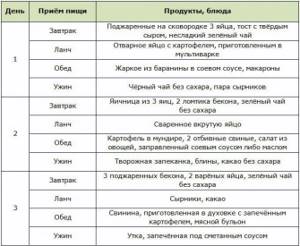
You can choose your own dishes for each new day.
Second phase
This stage is considered the longest and can last even more than a year. It is at this stage that significant changes should occur in your body. Now you should eat as many protein foods and vegetables as possible. You don’t have to limit yourself too much when it comes to food, but don’t forget to exercise. This stage should be accompanied by a lot of physical exercise. The best way to start your morning is with a run and a glass of warm water. A jog can be replaced with a simple walk, but do it as early as possible. Ideally, do this at six o'clock in the morning. This stage should continue until you are completely satisfied with your weight.
Authorized Products
The main food for a fatty diet is lard, meat, egg dishes (up to 8 pieces), dairy and fermented milk products (cream, sour cream, butter, processed and hard cheeses).
In addition, your diet should include:
- offal - liver, lungs, ventricles;
- fatty fish, seafood;
- soybeans, peas, beans;
- cottage cheese, fermented baked milk, kefir, homemade milk;
- nuts and seeds (chia, pumpkin, sunflower, flax);
- cold pressed vegetable oil;
- avocado;
- natural peanut butter, but no added sugar.
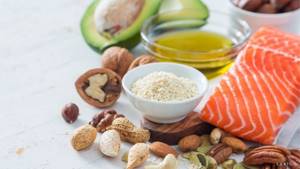
Allowed foods on the diet.
